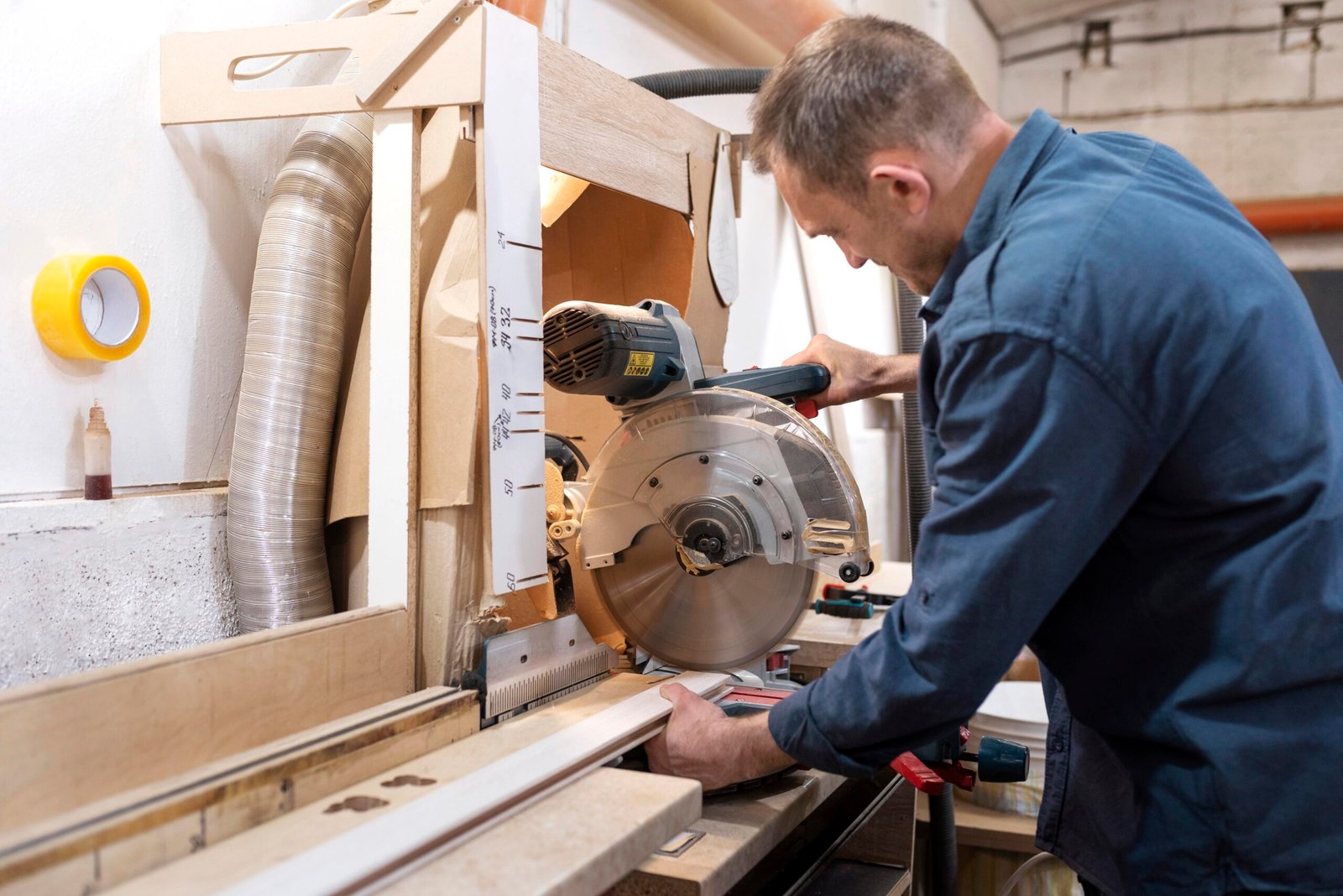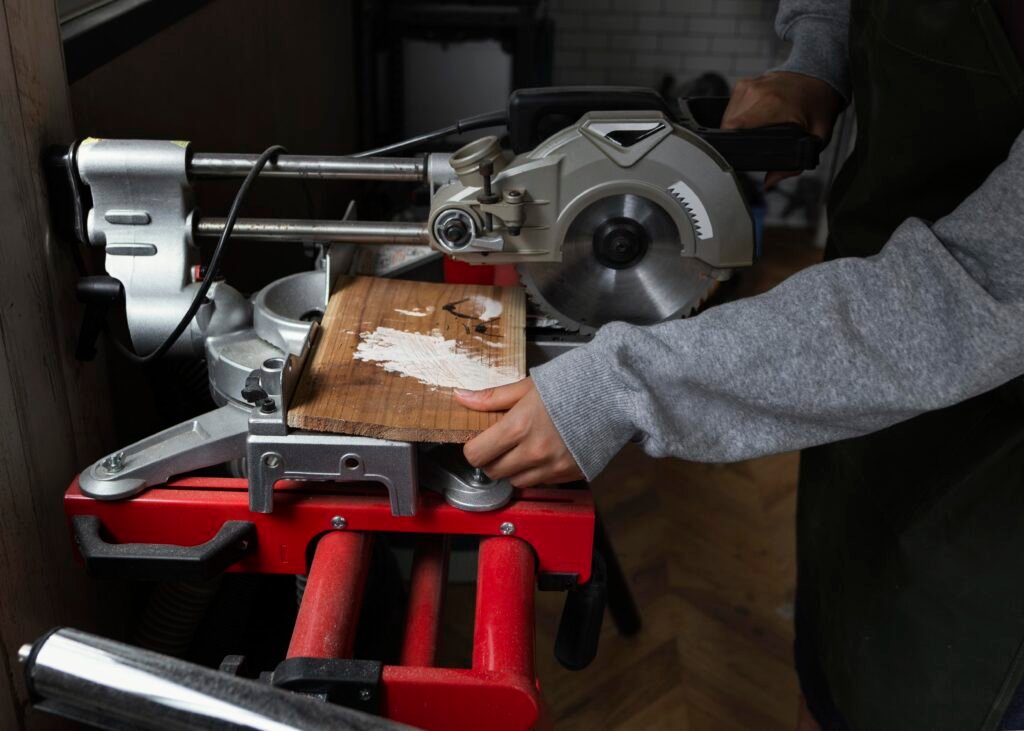
When it comes to setting up a woodworking shop, one of the toughest decisions you’ll face is whether to go with a Band Saw vs Table Saw. Both are essential tools in any workshop, but they have different strengths, uses, and safety considerations. Whether you’re cutting curves with band saw blades or making straight, precise cuts with a table saw, knowing what each tool is best for can help you choose the right one for your projects. Let’s dive into what makes each saw unique and see which one fits your woodworking style.
Key Features of a Band Saw
If you’ve ever used a band saw, you know it’s a versatile tool that’s perfect for cutting curves, intricate shapes, and even resawing lumber. It’s different from the table saw, which uses a spinning circular blade. The band saw uses a continuous loop of steel with teeth, which allows for smooth cuts that are ideal for both fine and larger projects.
Key Features of a Band Saw:
- Blade Design: The band saw’s blade is a narrow, continuous loop that moves between wheels. This gives it the ability to cut detailed curves and precise shapes, making it perfect for custom work or intricate patterns.
- Resawing: One of the coolest features of a band saw is its ability to resaw. Resawing is the process of slicing thicker boards into thinner ones, which is great when you want to make the most of expensive hardwoods. If you’re into creating veneers or just saving a bit of money, this feature is a game changer.
- Safety: Since the cutting action of the band saw is downward, the workpiece stays firmly pressed against the table as you cut. This minimizes the risk of kickback compared to other saws, making it a safer choice for smaller pieces or more delicate projects.
Key Features of a Table Saw
The table saw is a staple in almost every woodworking shop. Known for its speed and precision, it’s great for making straight cuts. Its circular blade spins quickly, allowing you to cut through larger pieces of wood with ease.
Key Features of a Table Saw:
- Blade Design: The table saw uses a circular blade that spins at high speeds. It’s perfect for making straight cuts along the length of boards or through large sheets of plywood. If you need a tool that can handle long cuts quickly and accurately, this is the one to use.
- Precision and Efficiency: The table saw is excellent for creating long, straight cuts. It’s the go-to tool for projects that require precision, like building cabinets, cutting long boards, or slicing plywood down to size.
- Safety Features: With the table saw, safety is key. The blade spins upward, which can sometimes cause kickback, but modern table saws come with safety features like riving knives, anti-kickback pawls, and blade guards. When used properly, these features reduce the risks involved.
Applications of a Band Saw

The band saw is especially loved by woodworkers who need to cut curves, shapes, or perform tasks like resawing. Its versatility is unmatched, and it excels in detailed and intricate cuts.
Common Applications of a Band Saw:
- Cutting Curves and Shapes: Whether you’re crafting custom furniture or creating decorative wood pieces, the band saw’s narrow blade lets you cut smooth curves and detailed patterns with ease.
- Resawing Lumber: Resawing with a band saw is one of its standout features. You can take thick boards and slice them down into thinner pieces or veneers, making it ideal for maximizing material use and cutting down on waste.
- Tapered Cuts: If you’re working on furniture like a table with tapered legs, the band saw is perfect for cutting precise tapers. It allows for easy, smooth cuts that can be fine-tuned with a hand plane afterward.
- Safety: Thanks to the downward cutting action, the band saw keeps the workpiece secure on the table, which minimizes the risk of kickback. This makes it a safer option for cutting smaller or more detailed pieces of wood.
Applications of a Table Saw
The table saw is a must-have for anyone working on larger projects, especially those involving long straight cuts or repetitive cuts.
Common Applications of a Table Saw:
- Rip Cuts: The table saw is perfect for ripping long boards down to a specific width. This is particularly useful for breaking down large sheets of plywood or cutting wide boards to size.
- Cross Cuts: For cuts across the grain, the table saw can make fast, clean crosscuts, which are needed for building furniture, shelving, and other box-style projects.
- Cutting Plywood: If you’re working with plywood often, the table saw is indispensable. It makes cutting large sheets into smaller panels easy, and it offers clean, accurate results every time.
- Efficiency: The table saw is designed to make fast, consistent cuts. Whether you’re cutting multiple pieces of the same size or breaking down large materials, it saves time and effort on projects.
Safety Considerations for Band Saw vs. Table Saw
Safety is important with any power tool, and both the band saw and table saw come with their own sets of considerations.
- Band Saw Safety: The band saw generally has a safer design because its downward cutting action keeps the workpiece stable. However, it’s still important to stay focused, keep your hands clear of the blade, and ensure the blade is properly tensioned.
- Table Saw Safety: The table saw can be a bit more dangerous due to the risk of kickback. Modern table saws come with built-in safety features, like riving knives and anti-kickback pawls, but it’s important to always use the tool correctly—stand to the side of the workpiece, and always keep your hands at a safe distance from the blade.
Which One Should You Choose?
Choosing between a band saw and a table saw ultimately depends on the type of work you’re doing, the space you have in your shop, and your personal preferences.
- Choose a Table Saw if:
- You primarily need to make long, straight cuts or break down large sheets of plywood.
- You’re working on projects that require precise, repetitive cuts, such as cabinetry or bookshelves.
- You have the space and need a fast, efficient tool for straight cuts.
- Choose a Band Saw if:
- You work with curves, intricate shapes, or need to resaw lumber.
- Space is tight, and you need a more compact, versatile tool.
- You value safety and precision, especially when working with smaller, more detailed pieces of wood.
Conclusion
Both the band saw and table saw are indispensable tools in the woodworking world. The table saw is unmatched for making quick, straight cuts and is perfect for projects that require accuracy and speed. On the other hand, the band saw is the tool of choice for cutting curves, intricate shapes, and resawing lumber to maximize material use.
Choosing between these two tools depends on the kind of woodworking you do most often. If you have the space and budget, having both in your shop will give you the versatility to tackle nearly any project. Whether you’re cutting a straight line or crafting a detailed curve, having the right tool for the job will make all the difference.
Leave a Reply